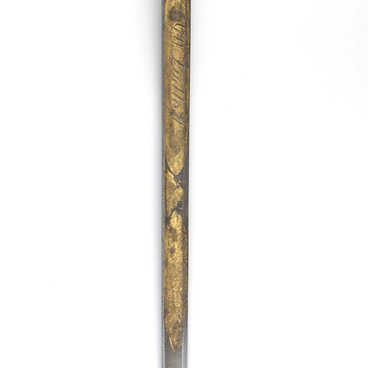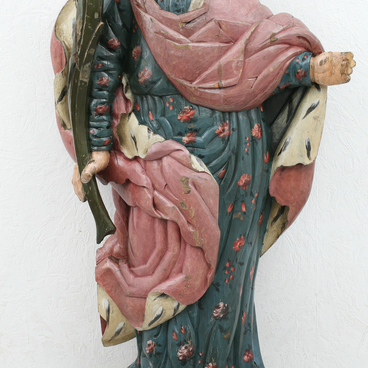An embroidered women’s robe made from nettle canvas in late 19th century. A robe like that was a traditional element of the Khanty and Mansi people’s costume. In winter they preferred clothes made from reindeer skins and in summer wore clothes made form plant fibre. Common among Khanty and Mansi were women’s decorations from colour beads worn on the breast. The ornament was typically geometrical figures.
Robe made from nettle canvas
Время создания
Late 19th century
Техника
Home-woven cloth, wool embroidery
#4
Robe made from nettle canvas
#3
#7
Nettle Products
#6
Nettles was a material of choice for home-woven kerchiefs, scarfs, women’s and men’s robes and trousers. It was used to make canvas, spin ropes and fishing nets
#8
Manufacture
#5
The plant was collected in autumn at the end of its growing season. Leaves were separated from the hards, soaked in water and left to dry for a few months. Then they were crushed with a special splitting maul to split them into fibres. A maul was a plate made from wood or stone.
It narrowed to one end and formed a blade. Nettle fibres were spun to form threads with the help of a spindle. Threads turned out a greenish colour, therefore they were bleached in a water and ash mixture and then dried in the cold. Threads became soft and white and were used to weave canvas from.
#10
Tunic shirt
#9
This Khanty robe has a tunic-shaped cut; the canvas is gored downwards with the help of wedges sewn in between the sides and the back. The sleeves of the robe, the sides, the front and the top of the back are decorated with geometrical embroidery and applique.
#12
Ornament
#11
The colour of the ornament had a symbolic meaning for the Khanty and Mansi people: white was associated with the divine, black was a symbol of the underworld, red was the colour of earthly life, and yellow meant solar warmth. Clothes made from nettle cloth were flat-stitch embroidered with woollen colour threads and beads.
#13
The craft of weaving
#14
The craft of weaving among Siberian peoples goes back to the first centuries A.D. The territory of today’s Khanty-Mansi district was covered with whole ‘plantations’ of nettles. It was used for cooking, protective charms against evil spirits were made from its leaves, and the root was used as a medicine.
#15
Nettle fibres were spun on a wooden distaff to make canvas for clothes. It was a long straight staff with a spindle and a spindle whorl. The spindle whorl served as a weight for the spindle and the yarn was attached to it. One end of the staff was abutted to the ceiling or roof beam and the other to the floor. The spindle was about thirty centimetres long.
#16
Khanty and Mansi people sometimes used a Russian spinning device (kopyl) with a wooden spindle. The poppet-like device consisted of a base, a flat comb and a leg. All the parts were cut out of a whole piece of wood which had to be dried beforehand. Fibre treatment and spinning was done by women.
#17
O.E. Kler Sverdlovsk Regional Ethnography Museum
читать дальшескрыть
00:00
00:00
1x
Robe made from nettle canvas
Время создания
Late 19th century
Техника
Home-woven cloth, wool embroidery
Открыть в приложении
Поделиться

